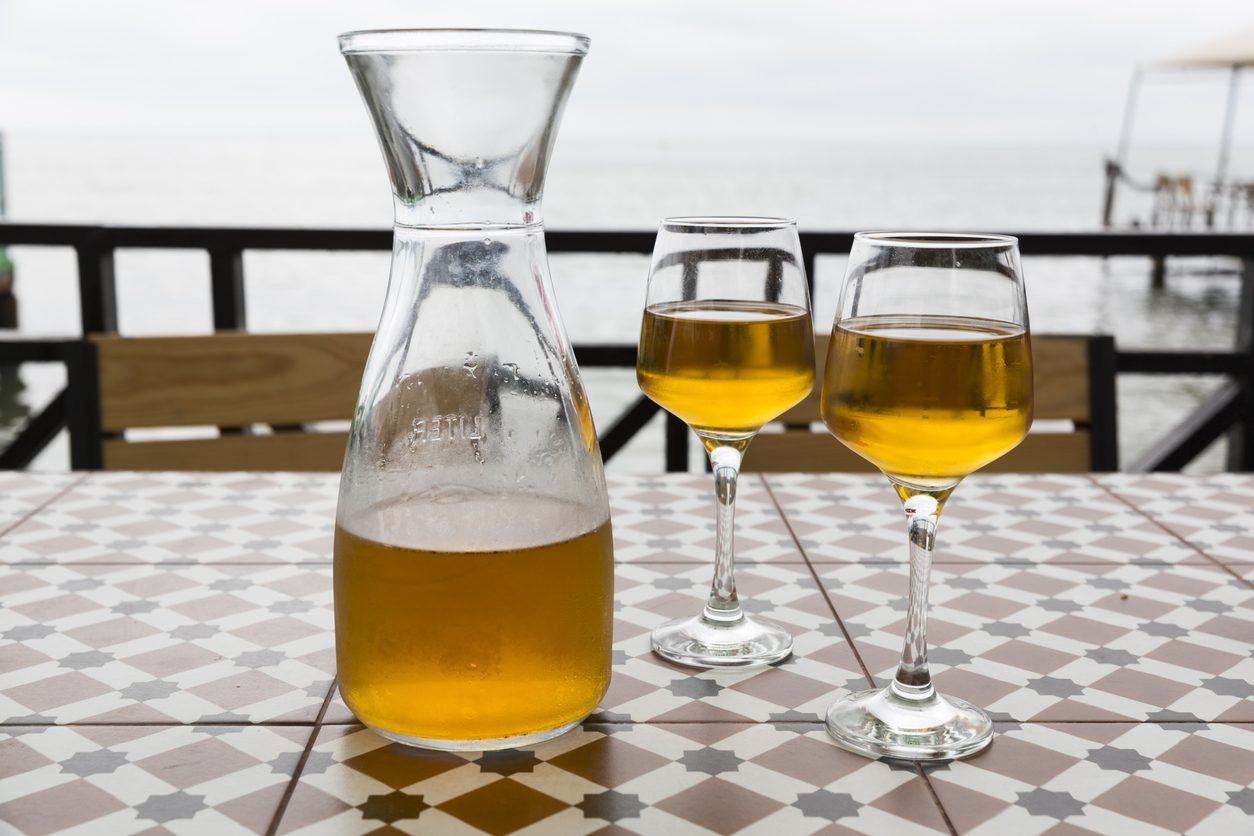Skin-Contact Winemaking: What You Need to Know About Orange Wine
Orange wine is a unique and intriguing creation owing to its category in the realm of winemaking. This is thanks to the beverage’s eclectic origin, production methods, flavor characteristics, and serving suggestions. In this article, we take an indepth look at orange wine.
;Resize,width=742;)
In recent years, orange wine has captured the attention of wine enthusiasts worldwide. With its distinctive amber hue and complex flavor profile, orange wine stands out as a unique category in the world of winemaking. Take a deep dive into the origins, production methods, flavor characteristics, and serving suggestions for orange wine, shedding light on this fascinating beverage.
Origins and History of Orange Wine

Orange wine, also known as skin-contact wine or amber wine, traces its origins back thousands of years to the Caucasus region, particularly Georgia. In this ancient winemaking tradition, white grapes are fermented with their skins, seeds, and stems, resulting in the characteristic amber color and rich flavors. This method of winemaking dates back to Neolithic times, showcasing the enduring legacy of orange wine production.
How is Orange Wine Made?

The production of orange wine differs significantly from that of traditional white wine. While white wine is typically made by pressing the juice from white grapes and fermenting it without the skins, orange wine undergoes an extended maceration process. During maceration, the grape juice remains in contact with the skins, seeds, and stems for an extended period, extracting color, tannins, and flavor compounds. This prolonged contact gives orange wine its unique characteristics, including its rich color and complex flavor profile.
The Unique Profile and Characteristics of Orange Wine
One of the most distinctive aspects of orange wine is its flavor profile, which differs from both white and red wines. Orange wine exhibits a wide range of aromas and flavors, including dried fruits, nuts, floral notes, and a hint of tannins. The extended maceration process adds depth and complexity to the wine, resulting in a robust and textural drinking experience. Each bottle of orange wine offers a unique expression of the grape variety, terroir, and winemaker's skill, making it an exciting and dynamic beverage to try.

How to Enjoy Orange Wine Like a Wine Aficionado
When it comes to serving orange wine, it's essential to treat it like a light red wine. Serve it slightly chilled, around 55-60°F (13-16°C), in a wine glass to allow its aromas to develop fully. Orange wine pairs exceptionally well with a variety of dishes, thanks to its bold flavors and robust structure. It complements a range of cuisines, including Mediterranean, Middle Eastern, and Asian dishes. Try pairing orange wine with roasted vegetables, seafood, charcuterie, and aged cheeses for a delightful experience. Its versatility and complexity make it a fantastic addition to any dining occasion.
Enjoy!
;Resize,width=767;)
;Resize,width=712;)
;Resize,width=712;)
;Resize,width=712;)
